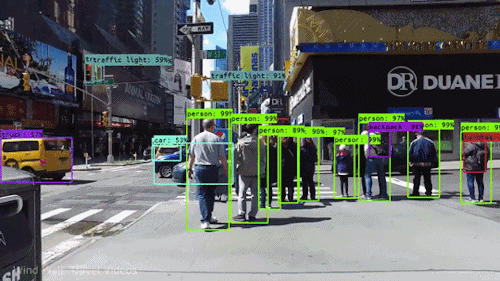Tal Daniel • Moshe Kimhi • Hila Manor • Elias Nehme • Dalia Urbach • Anat Levin • Lihi Zelnik-Manor
Jupyter Notebook tutorials for the Technion's ECE 046746 Computer Vision course
Previous semesters: Spring 2020, Spring 2021, Winter 2021-2022, Spring 2022
| File | Topics Covered |
|---|---|
Setting Up The Working Environment.pdf |
Guide for installing Anaconda locally with Python 3 and PyTorch, integration with PyCharm and using GPU on Google Colab |
ee046746_tut_01_intro_image_processing_python.ipynb\pdf |
Python basics: NumPy, Matplotlib, OpenCV basics: Reading and Writing Images, Basic Image Manipulations, Image Processing 101: Thresholding, Blurring |
ee046746_tut_01_2_deep_learning_pytorch_basics.ipynb\pdf |
Deep Learning and PyTorch basics, MNIST, Fashion-MNIST, MULTI-layer Perceptron (MLP), Fully-Connected (FC) |
ee046746_tut_02_probabilistic_discriminative_learning.ipynb\pdf |
Intro to Machine Learning, Discriminative vs Generative Models, Probabilistic Discriminative Models |
ee046746_tut_03_04_convolutional_neural_networks.ipynb\pdf |
2D Convolution (Cross-corelation), Convolution-based Classification, Convolutional Neural Networks (CNNs), Regularization and Overfitting, Dropout, Data Augmentation, SVHN dataset, Visualizing Filters, The history of CNNs, Applications of CNNs, The problems with CNNs (adversarial attacks, poor generalization, fairness-undesirable biases) |
ee046746_tut_03_04_appndx_visualizing_cnn_filters.ipynb\pdf |
Appendix - How to visualize CNN filters and filter activations given image with PyTorch |
ee046746_tut_05_deep_object_detection.ipynb\pdf |
Deep Object Detection, Localization, Sliding Windows, Intersection over Union (IoU), Average Precision (AP), Region-based Convolutional Neural Networks (R-CNN) Family, Fast/er R-CNN, Selective Search, Non-Maximum Supression (NMS), Region of Interest Pooling Layer (RoI), Region Proposal Network (RPN), Anchor boxes, Detectron2, You Only Look Once (YOLO) Family, YOLO V1-V4, Single Shot Multibox Detection (SSD) |
ee046746_tut_06_deep_semantic_segmentation.ipynb\pdf |
Semantic Segmentation, IoU, AP, PASCAL Visual Object Classes, Common Objects in COntext (COCO), Fully Convolutional Network (FCN),Up-Convolution / Transposed-Convolution, Skip connections, Pyramid Scene Parsing Network (PSPNet), 1x1 convolution, Mask R-CNN, DeepLab, Atrous convolution, Conditional Random Field (CRF) |
ee046746_tut_07_deep_object_tracking.ipynb\pdf |
Object Detection vs Object Tracking, Detection Failure Cases, Motion Model, Visual Appearance Model, Detection-Based Vs. Detection-Free, Offline Vs. Online Tracking, Generic Object Tracking Using Regression Networks (GOTURN), Multi-Domain Convolutional Neural Network Tracker (MDNet), Deep Simple Online and Realtime Tracking (Deep SORT) |
ee046746_tut_08_edge_and_line_detection.ipynb\pdf |
Edge and Line detection, Canny, Hough transform, RANSAC, and SCNN |
ee046746_tut_09_homography_alignment_panoramas.ipynb\pdf |
Feature Matching, Parametric Transformations, RANSAC, Image Warping, Image Blending, Panorama Stitching, Kornia |
ee046746_tut_10_geometry_review.ipynb\pdf |
Camera Models, Camera Matrix, Intrinsic and Extrinsic Parameters, Distortion Models, Camera Calibration, Homography Edge Cases, Epipolar Geometry, Essential/Fundamental Matrix, 8-point Algorithm |
ee046746_tut_11_structure_from_motion.ipynb\pdf |
Pose Estimation, Triangulation, Reconstruction, Two-view Structure from Motion, Bundle Adjustment, Incremental Smoothing and Mapping |
ee046746_tut_12_attention_and_transformers.ipynb\pdf |
Processing Sequences, Attention, Self-Attention, Multiple Headed Attention, Transformers |
ee046746_tut_13_self_supervised_learning.ipynb\pdf |
Representation and Self-Supervised Learning, Autoencoders, Self-Supervised Learning, Corrupted Version Reconstruction & Visual Common Sense Tasks, Contrastive Methods, Simple Framework for Contrastive Learning of Visual Representations (SimCLR), Using the learned Representation for Downstream Tasks, Momentum Contrast (MoCo), Contrastive Predictive Coding (CPC) |
ee046746_tut_14_generative_adverserial_networks.ipynb\pdf |
Generative Adversarial Network (GAN), Explicit/Implicit density estimation, Nash Equilibrium, Mode Collapse, Vanishing/Diminishing Gradient, Conditional GANs, WGAN, EBGAN, BEGAN, Tips for Training GANs, Pix2Pix, CycleGAN |
You can view the tutorials online or download and run locally.
| Service | Usage |
|---|---|
| Jupyter Nbviewer | Render and view the notebooks (can not edit) |
| Binder | Render, view and edit the notebooks (limited time) |
| Google Colab | Render, view, edit and save the notebooks to Google Drive (limited time) |
Jupyter Nbviewer:
Press on the "Open in Colab" button below to use Google Colab:
Or press on the "launch binder" button below to launch in Binder:
Note: creating the Binder instance takes about ~5-10 minutes, so be patient
Press "Download ZIP" under the green button Clone or download or use git to clone the repository using the
following command: git clone https://github.com/HilaManor/ee046746-computer-vision.git (in cmd/PowerShell in Windows or in the Terminal in Linux/Mac)
Open the folder in Jupyter Notebook (it is recommended to use Anaconda). Installation instructions can be found in Setting Up The Working Environment.pdf.
For the complete guide, with step-by-step images, please consult Setting Up The Working Environment.pdf
- Get Anaconda with Python 3, follow the instructions according to your OS (Windows/Mac/Linux) at: https://www.anaconda.com/products/individual
- Install the basic packages using the provided
environment.ymlfile by running:conda env create -f environment.ymlwhich will create a new conda environment nameddeep_learn. If you did this, you will only need to install PyTorch, see the table below. - Alternatively, you can create a new environment for the course and install packages from scratch:
In Windows open
Anaconda Promptfrom the start menu, in Mac/Linux open the terminal and runconda create --name deep_learn. Full guide at https://docs.conda.io/projects/conda/en/latest/user-guide/tasks/manage-environments.html#creating-an-environment-with-commands - To activate the environment, open the terminal (or
Anaconda Promptin Windows) and runconda activate deep_learn - Install the required libraries according to the table below (to search for a specific library and the corresponding command you can also look at https://anaconda.org/)
| Library | Command to Run |
|---|---|
Jupyter Notebook |
conda install -c conda-forge notebook |
numpy |
conda install -c conda-forge numpy |
matplotlib |
conda install -c conda-forge matplotlib |
scipy |
conda install -c anaconda scipy |
scikit-learn |
conda install -c conda-forge scikit-learn |
tqdm |
conda install -c conda-forge tqdm |
opencv |
conda install -c conda-forge opencv |
pytorch (cpu) |
conda install pytorch torchvision torchaudio cpuonly -c pytorch |
pytorch (gpu) |
conda install pytorch torchvision torchaudio cudatoolkit=10.2 -c pytorch |
- To open the notbooks, open Ananconda Navigator or run
jupyter notebookin the terminal (orAnaconda Promptin Windows) while thedeep_learnenvironment is activated.
